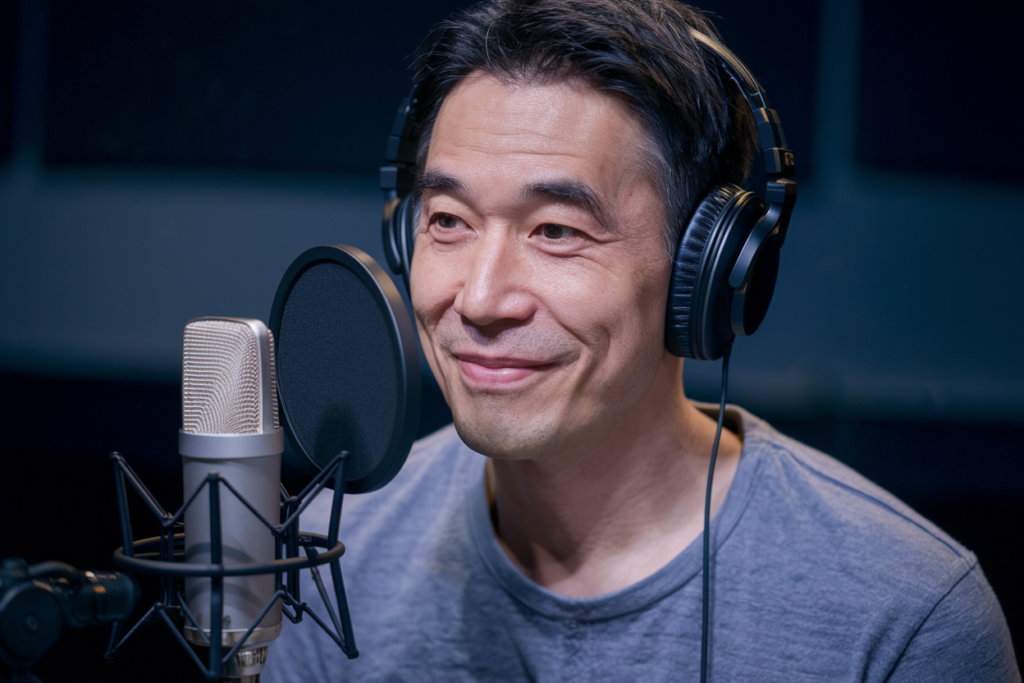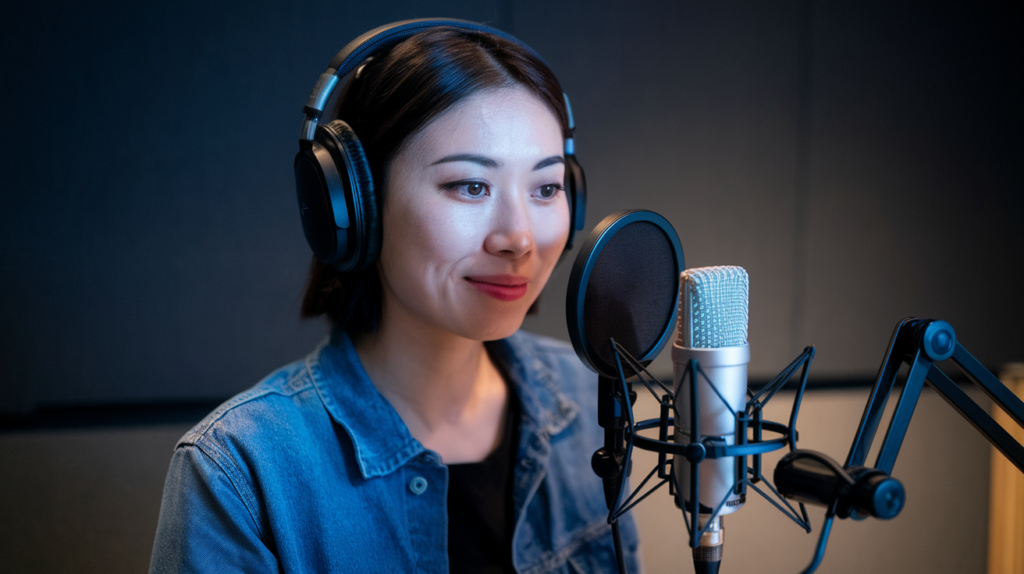Key Takeaways
- Lip Sync Accuracy Is Essential: Proper synchronization between dialogue and character mouth movements is crucial for viewer immersion in Japanese dubbing.
- Impact on Viewer Experience: Accurate lip sync enhances emotional connections, allowing audiences to engage more deeply with characters and their stories.
- Role of Voice Actors: Skilled voice actors analyze original material to embody characters’ emotions and deliver performances that align with visual cues.
- Audio Engineering Techniques: Advanced audio engineering practices are employed during post-production to ensure dialogue matches visuals precisely, enhancing clarity and consistency.
- Challenges Faced: Differences in language structure and timing can complicate the dubbing process, requiring careful adaptation by voice actors to maintain authenticity.
- Case Studies Illustrate Importance: Successful examples highlight the effectiveness of meticulous lip sync efforts, while notable failures emphasize how inaccuracies can detract from the overall viewing experience.
Ever wondered why some Japanese dubbing feels so seamless while others fall flat? Lip sync accuracy in Japanese dubbing is crucial for keeping viewers immersed in the story. When the dialogue doesn’t match up with the characters’ mouth movements, it can pull you right out of the experience.
This article dives into what makes lip sync accuracy a vital aspect of dubbing and how it impacts your enjoyment of anime and films. You’ll discover the techniques used by skilled voice actors and directors to create that perfect synchronicity. Whether you’re a die-hard anime fan or just curious about the process, understanding this art form will enhance your appreciation for Japanese media.
Overview of Japanese Dubbing
Japanese dubbing involves a meticulous process where voice actors work to synchronize their dialogue with animated characters. This synchronization, often referred to as lip sync accuracy, plays a crucial role in enhancing viewer immersion. When you watch anime or films in Japanese, proper lip sync ensures that the character’s mouth movements match the spoken words, creating a seamless viewing experience.
Voice talent selection is vital in this process. Skilled voice artists use their techniques not just for vocal performance but also to embody the character’s emotions and intentions. Each voice actor brings unique qualities that enhance the storytelling aspect of the medium. They study the original material closely, adapting their performances to fit within the constraints of time and emotion while ensuring alignment with visual cues.
Directors overseeing these dubbing projects employ various methods to achieve perfect synchronicity. They focus on timing adjustments and phrasing modifications that cater specifically to each scene’s emotional tone. Sometimes, they might even encourage improvisation from voice actors if it leads to a more authentic portrayal.
The challenge lies in balancing fidelity to the original script with natural delivery in Japanese. Voiceovers must feel genuine, allowing viewers to connect deeply with characters despite language differences. Ultimately, this dedication contributes significantly to how audiences perceive and enjoy Japanese media globally.
Importance of Lip Sync Accuracy
Lip sync accuracy plays a crucial role in the quality of Japanese dubbing, significantly influencing how audiences connect with the content. When dialogue aligns perfectly with character mouth movements, it enhances immersion and engagement.
Impact on Viewer Experience
Viewers often expect seamless integration between audio and visual elements. Accurate lip sync ensures that voice actors’ performances resonate authentically with the characters they portray. When you watch an anime or film, proper synchronization allows you to focus on the story rather than being distracted by mismatched dialogue. This alignment enriches emotional connections, as viewers better relate to characters when their expressions match what they’re saying.
Cultural Considerations
Cultural nuances also come into play in achieving lip sync accuracy. Japanese media often incorporates unique speech patterns and emotions that may not directly translate into other languages. Skilled voice artists navigate these subtleties to maintain both fidelity to the original script and natural delivery in Japanese. The challenge lies not only in translating words but also in embodying cultural context, ensuring that performances feel authentic while still resonating with global audiences.
Techniques for Achieving Lip Sync Accuracy
Achieving lip sync accuracy in Japanese dubbing involves a blend of artistic expression and technical precision. Various techniques contribute to creating a seamless viewing experience that resonates with audiences.
Voice Acting Techniques
Voice acting plays a crucial role in lip sync accuracy. Skilled voice actors focus on matching the rhythm and cadence of their performances to the character’s mouth movements. They analyze the original dialogue, breaking it down into syllables and phonetics to ensure synchronization aligns perfectly with visual cues. By embodying characters’ emotions, talented voice artists bring authenticity to their roles, enhancing overall believability. Practicing these techniques allows voice over talent to deliver lines that not only sound good but also visually match what viewers see on screen.
Audio Engineering Practices
Audio engineering practices are essential for refining lip sync accuracy during post-production. Sound engineers utilize advanced software tools to manipulate audio tracks, adjusting timing and pitch as needed. They often synchronize dialogue with visual elements frame by frame, ensuring every spoken word matches the corresponding mouth movement precisely. Additionally, they apply sound editing techniques like equalization and compression, ensuring clarity and consistency across different scenes or episodes. Engaging in these meticulous processes ensures that voice overs enhance rather than distract from the audience’s experience, allowing them to immerse themselves fully in the story without jarring interruptions.
By focusing on these specific techniques within voice acting and audio engineering, you can appreciate how vital each element is in achieving perfect lip sync accuracy in Japanese dubbing.
Challenges in Lip Sync Accuracy
Lip sync accuracy presents various challenges in Japanese dubbing, impacting the overall viewer experience.
Language Differences
Language differences play a significant role in achieving lip sync accuracy. Japanese and English often have contrasting syllable structures and phonetic patterns. For instance, Japanese tends to use more vowel sounds within its words, while English incorporates a mix of consonants that can create varying mouth movements. This difference requires voice actors to adapt their performances carefully. They must find equivalent expressions or phrases that fit both the emotion and timing of the original dialogue without sacrificing authenticity. The challenge lies in maintaining character integrity while ensuring the dubbed version aligns seamlessly with visual cues.
Timing and Rhythm in Dialogue
Timing and rhythm also present notable hurdles in synchronization efforts. Each scene may require specific pacing that matches character movements on screen; thus, voice talent must deliver their lines precisely to match these nuances. Voice artists often analyze scripts for emotional beats, adjusting their performances accordingly to enhance believability. Moreover, some scenes demand rapid exchanges between characters, complicating synchronization further as voice over actors juggle timing without compromising clarity or expression. Achieving this delicate balance is critical for creating an engaging viewing experience where dialogue flows naturally alongside visual elements.
The combination of language differences and timing challenges emphasizes the complexity involved in achieving lip sync accuracy within Japanese dubbing projects. Voice talents continuously refine their skills through practice and collaboration with directors to ensure successful adaptations that resonate with audiences globally.
Case Studies on Lip Sync Accuracy
Lip sync accuracy is crucial in Japanese dubbing, as it directly influences viewer immersion. Here are a few case studies illustrating successful and notable failures in achieving this synchronization.
Successful Examples
In various anime adaptations, skilled voice actors excel at aligning their performances with character mouth movements. An example includes a popular series where the voice talent meticulously analyzed original dialogue. By matching phonetics and emotional nuances, they created an authentic experience for viewers. This attention to detail ensured that characters felt alive and relatable, enhancing audience engagement.
Another successful instance involves a feature film dubbed into Japanese. The director collaborated closely with voice artists during recording sessions to refine timing and emotional delivery. As a result, the final product showcased seamless integration between audio and visuals, captivating audiences both familiar and new to the story.
Notable Failures
Despite advancements in dubbing techniques, some projects struggle with lip sync accuracy. One notable failure occurred in a widely anticipated anime adaptation where mismatched dialogue led to awkward viewing experiences. Viewers noted that the lip movements did not align with spoken words, detracting from character authenticity.
Another case involved a live-action film where translation issues complicated synchronization efforts. Voice actors faced challenges adapting their performances to fit the original dialogue’s rhythm and emotion accurately. Consequently, this dissonance left audiences feeling disconnected from the narrative.
These examples highlight that while achieving lip sync accuracy presents challenges, successful endeavors demonstrate its importance in creating immersive viewing experiences within Japanese dubbing.
Conclusion
Lip sync accuracy in Japanese dubbing is essential for an immersive viewing experience. It enhances emotional connections between viewers and characters while preserving the integrity of the original work. The meticulous process of synchronizing dialogue with mouth movements showcases the artistry and skill involved in voice acting.
As you explore Japanese media, appreciate the effort that goes into achieving seamless audio-visual integration. Recognizing these nuances can deepen your understanding and enjoyment of anime and films. Whether it’s through careful casting or innovative directing techniques, lip sync accuracy remains a critical aspect that enriches storytelling across cultures.
Frequently Asked Questions
What is lip sync accuracy in Japanese dubbing?
Lip sync accuracy refers to the precise synchronization of dialogue with a character’s mouth movements in Japanese dubbing. It is essential for creating a seamless viewing experience, enhancing viewer immersion and emotional connection with characters.
Why is lip sync important for viewer immersion?
Accurate lip sync helps viewers engage more deeply with the story by aligning audio and visual elements. When characters’ expressions match their speech, it fosters stronger emotional connections, making the narrative more relatable and enjoyable.
How do voice actors ensure accurate lip sync?
Voice actors achieve accurate lip sync by analyzing original dialogue for syllables and phonetics. They adapt their performances to match character mouth movements while conveying emotion, ensuring authenticity in the dubbed version.
What challenges arise in achieving perfect lip sync?
Challenges include differences between languages, such as contrasting syllable structures that complicate synchronization. Voice actors must also navigate timing issues, ensuring delivery matches character movements and emotional beats during rapid exchanges.
How do directors contribute to lip sync accuracy?
Directors play a crucial role by guiding voice talent through timing adjustments and emotional tone settings. They may encourage improvisation to enhance authenticity, ensuring that the final product resonates well with audiences.
Can cultural factors affect lip syncing in Japanese media?
Yes, cultural factors significantly influence how dialogue is expressed in Japanese media. Unique speech patterns and emotions must be considered during dubbing to maintain fidelity to the original script while delivering natural performances.
Are there examples of successful or failed lip syncing in adaptations?
Successful examples include popular anime series where meticulous analysis led to authentic experiences. Conversely, notable failures highlight mismatched dialogue or translation issues that disconnected viewers from the narrative due to poor synchronization efforts.







